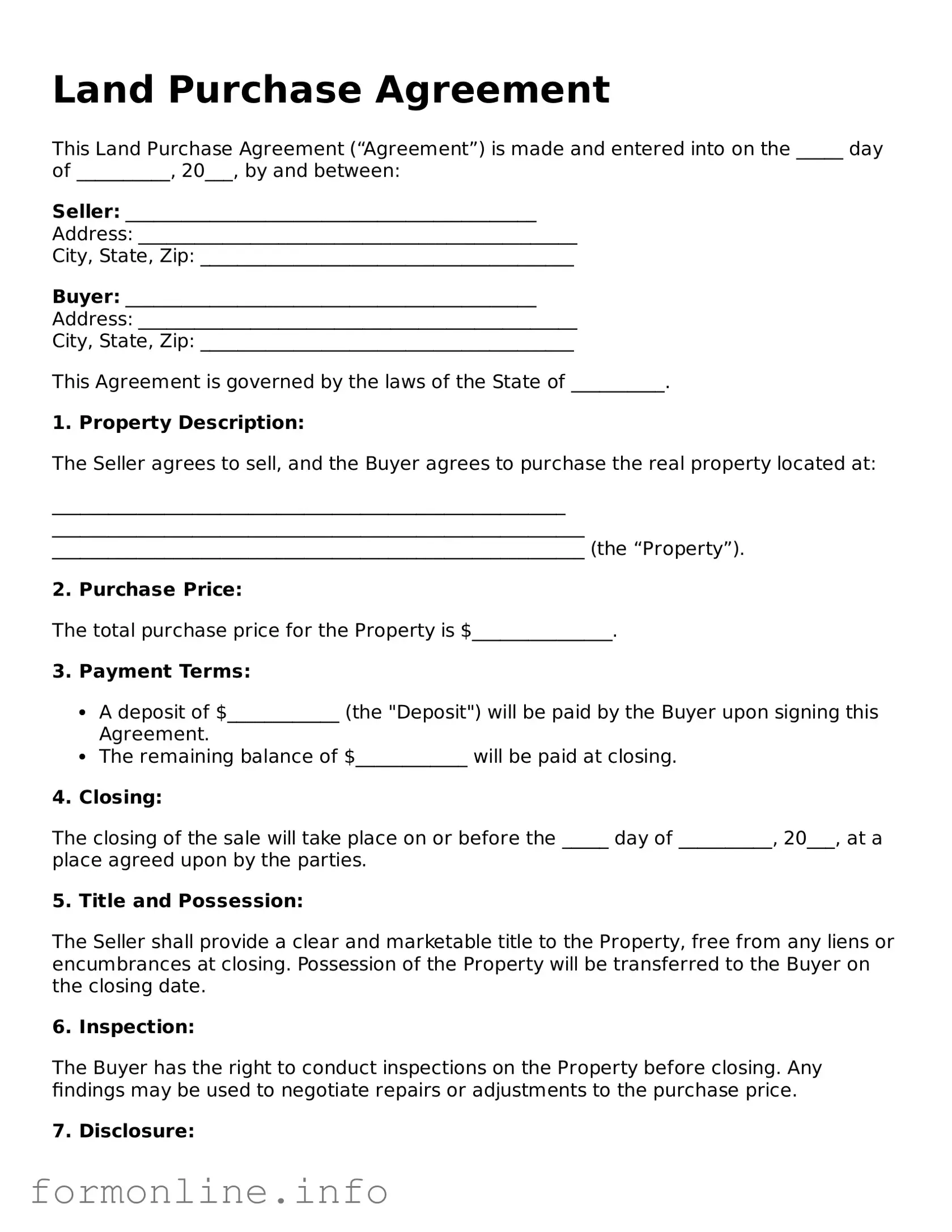Land Purchase Agreement
This Land Purchase Agreement (“Agreement”) is made and entered into on the _____ day of __________, 20___, by and between:
Seller: ____________________________________________
Address: _______________________________________________
City, State, Zip: ________________________________________
Buyer: ____________________________________________
Address: _______________________________________________
City, State, Zip: ________________________________________
This Agreement is governed by the laws of the State of __________.
1. Property Description:
The Seller agrees to sell, and the Buyer agrees to purchase the real property located at:
_______________________________________________________
_________________________________________________________
_________________________________________________________ (the “Property”).
2. Purchase Price:
The total purchase price for the Property is $_______________.
3. Payment Terms:
- A deposit of $____________ (the "Deposit") will be paid by the Buyer upon signing this Agreement.
- The remaining balance of $____________ will be paid at closing.
4. Closing:
The closing of the sale will take place on or before the _____ day of __________, 20___, at a place agreed upon by the parties.
5. Title and Possession:
The Seller shall provide a clear and marketable title to the Property, free from any liens or encumbrances at closing. Possession of the Property will be transferred to the Buyer on the closing date.
6. Inspection:
The Buyer has the right to conduct inspections on the Property before closing. Any findings may be used to negotiate repairs or adjustments to the purchase price.
7. Disclosure:
The Seller must disclose any known defects, hazards, or other important facts pertaining to the Property. Failure to disclose may result in legal consequences.
8. Governing Law:
This Agreement shall be governed by and construed in accordance with the laws of the State of __________.
9. Signatures:
By signing below, the parties acknowledge their acceptance of the terms of this Agreement:
Seller Signature: ______________________________________ Date: ________________
Buyer Signature: _______________________________________ Date: ________________
This template provides a foundation for a land purchase agreement; however, it is advisable to seek professional legal counsel to ensure compliance with state-specific laws and regulations.
